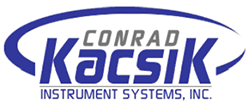 Meeting Nadcap certification requirements and avoiding non-conformances in audits is a complex and challenging process, but it doesn’t need to be intimidating.
Meeting Nadcap certification requirements and avoiding non-conformances in audits is a complex and challenging process, but it doesn’t need to be intimidating.
One way to demystify the process is to think of the audit as an open-book test. Nadcap explains in detail what it takes to meet audit requirements—and how to avoid dreaded Non-Conformance Reports (NCRs)—right on its website. You can even access checklists for any audit online.
If you’re unsure of what to focus on prior to an audit, it can help to know some of the most common NCRs. Nadcap compiled the following lists between May 2016 and May 2017.
Nadcap Heat-Treating Checklist AC7102
Here are the top 10 checklist items that led to the most NCRs in audits conducted without job audits (in order of most prominent problem area):
- 1.1.1.1—Did the Supplier perform a self-audit as above, including all applicable job audits?
- 3.4.1—Are all corrective actions from the previous Nadcap audit still implemented?
- 1.1.3—Did the Supplier send the following to the auditor 30 days prior to audit?
- 6.1.1—Is each heat treatment cycle reviewed for job traceability, correct temperature, time at temperature and all other related parameters?
- 3.2.1.1—Are the quality and technical requirements, including any unique customer requirements, adequately defined and documented?
- 3.5.2—Are all Nadcap elements within the scope of the Supplier’s accreditation properly addressed in the internal audit?
- 9.1.2.1—Does the internal procedure specify the method for determining heat-up rate, start of soaking time, end of soaking time and cooling rate?
- 7.3.2—Are test reports documented and held on file for customer review?
- 11.2.1.2—Does the internal procedure control calibration of vacuum instruments, controllers, recorders, thermocouples, master gauges, dew point and other gas contaminant measuring instruments?
- 9.2.1—Are all components of each furnace that can affect the functionality inspected and maintained in accordance with a documented preventative maintenance schedule?
And here are the top 10 checklist items that led to the most NCRs in audits conducted with job audits over the same time period (in order of most prominent problem area):
- 14.3.4.2—(EC) Step One—Time. Cannot be answered in eAuditNet if the part is (EC-LR). (For example, a job may have instructions that require a part to be heat treated at 1800°F±25°F for 1hr +10/-0 minutes. A finding will be generated if the job is run under an hour or over an hour and 10 minutes.)
- 1.1.1.1—Did the Supplier perform a self-audit as above, including all applicable job audits?
- 14.6.2—Did the treatment of hardware conform to the customer's specified requirements?
- 14.2.1—Are the specification-required parameters for the complete heat treatment cycle listed on the specific job planning for the Part Number, or is referenced in a controlled system traceable to the Part Number?
- 12.4.3—(EC) Step One - Time. Cannot be answered in eAuditNet if the part is (EC-LR—see example under number 1 above).
- 3.4.1—Are all corrective actions from the previous Nadcap audit still implemented (check the last full audit)?
- 14.1.17—When the heat treat specification has cleaning requirements prior to or after heat treatment, are they properly flowed to the job planning including the cleaning specification?
- 14.3.4.1—If a thermal cleaning process is used for preparation does the time/temperature cycle meet the requirements of the approved work instruction?
- 1.1.3—Did the Supplier send the following to the auditor 30 days prior to audit? All provided items shall be in English and electronic format unless otherwise agreed upon between the auditor and Supplier.
- 12.17—Did this job comply with all other requirements?
Looking at these common NCRs, it’s remarkable what most have in common: preparation and procedures. Many of these issues concern internal audits that were poorly done or not done at all. Others relate to improper processes and procedures for equipment. Succeeding with an audit and having few NCRs means considerable prep work.
Another common thread to these most common NCRs is just how detailed these audits can be. Some of the things on that list may seem very granular, but the sheer number of NCRs demonstrates just how comprehensive and careful a Nadcap auditor is when approaching your systems and processes. When you approach your day-to-day activities and internal audits the same way, it dramatically reduces NCRs.
Getting It Right
Take all the time required to ensure you’re prepared for the audit. Carefully go through the entire checklist and self-audit before even scheduling a Nadcap audit. This provides two benefits—one, it will make your systems run more effectively and efficiently, and two, it will make the actual audit less stressful.
Still Uncertain?
Acing a Nadcap audit and meeting certification requirements while avoiding non-conformances is a tall order. If you want professional guidance from engineers and industry authorities who help Nadcap create standards, contact the experts at Conrad Kacsik.









